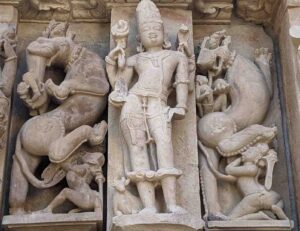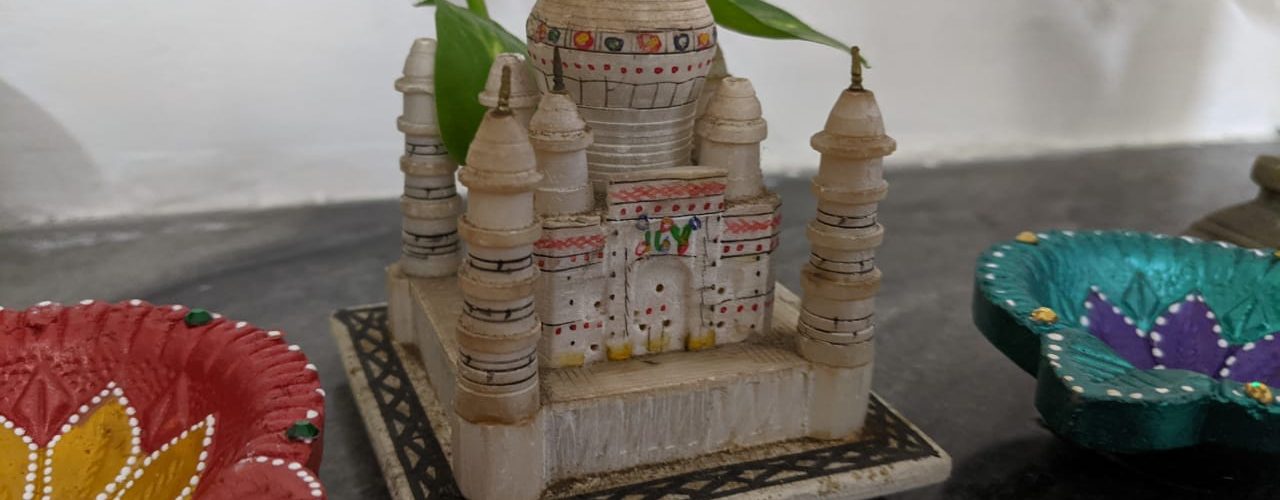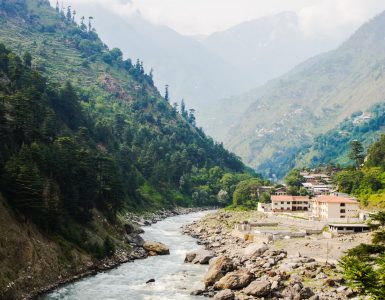India is rich in cultural heritage, with a vast array of historical and spiritual sites that reflect its diverse history, from ancient temples to colonial-era architecture.
While the Taj Mahal and Red Fort hog most of the limelight and social media space, India has far more historical and cultural sites. UNESCO has listed 43 World Heritage Sites from India, with Agra Fort, Taj Mahal, Ajanta, and Ellora Caves among the first listed in 1983.
Many of these cultural sites in India are more than 1000 years old, underscoring their heritage and historical value.
Given the challenges of climate change, it can negatively impact India’s cultural and ancient heritage. The changing climate affects these cultural sites, including physical degradation, flooding, and even breakage.
Rising temperatures and extreme rainfalls can damage stone, wood, and metal materials, leading to cracks, erosion, and structural weakening.

Historic temple sites, such as Konark (Sun Temple), Jagannath Temple in Odisha, Shore Temple in Tamil Nadu, forts in Goa and Kerala, are located extremely close to coastal regions or riverbanks, leaving them vulnerable to climatic changes.
Cyclones, rising sea levels and frequent flooding can cause damage or even submerge these cultural landmarks.
Further, many sites are adorned with ancient paintings and carvings, such as the Khajuraho Temples, Ajanta Caves and Sanchi Stupa, face risks from heavy rainfall, humidity, and storms, which can accelerate the degradation of murals and sculptures.
Humidity can lead to the growth of algae and moss on the surfaces of ancient structures, particularly those made of stone and wood.
Areas that experience desertification or drought conditions, like Rajasthan’s architecture, can see increasing erosion and physical degradation.
These are not hypothetical situations; the impact of climate change on cultural heritage sites is happening with increased frequency. Many historical sites in India have reported damage due to weather.
In 2020, when heavy rainfall lashed across the Agra region, parts of the Taj Mahal reported damage. Then again, in 2024, cracks were reported on the marble structure due to rain.
In 2019, minor damages were noticed on the 12th-century Shree Jagannath temple in Odisha due to cyclone ‘Fani’. In 2024, devotees were advised to avoid visiting the temple as Cyclone Dana approached Odisha’s coast.
In August 2024, the wall of the 12th-century Sonar Fort in Rajasthan’s Jaisalmer collapsed due to heavy rainfall. In the previous year, a portion of the 600-year-old Nalagarh Fort in Himachal Pradesh had collapsed due to rainfall.
So, whether it is an ancient temple, a historical fort or the wonders of the world, nothing escapes the fury of climate change; addressing and mitigating the impacts will have to be a key priority for the authorities.
Steps Taken to Protect Cultural Heritage Sites from Climate Change
Archaeological Survey of India (ASI) is the government agency responsible for protecting, preserving, and conserving the country’s cultural heritage, including historical monuments, archaeological sites, and artefacts.
There are 3,698 centrally protected monuments and sites in India under the jurisdiction of the Archaeological Survey of India. The conservation and maintenance of these centrally protected sites is a regular process and is taken up as per the requirement and availability of resources.
Scientific treatment and preservation are taken up as and when required by adopting key steps such as chemical treatment, consolidation, biocidal and hydrophobic treatment for mitigating the adverse effects of environmental factors.
All the necessary conservation and development works of centrally protected monuments/sites are attended to following the National Policy for Conservation, 2014.
ASI has started adopting climate-resilient solutions through technological interventions, periodical scientific treatment, consolidation and preservation of cultural heritage sites.
To monitor the wind speed and direction, rainfall, atmospheric pressure, temperature, etc, ASI and the Indian Space Research Organisation (ISRO) in collaboration installed Automated Weather Stations (AWS) in many historical monuments.
Besides, Air Pollution Laboratories are also established to monitor ambient pollutants such as suspended particulate matter at the Taj Mahal in Agra and Bibi ka Maqbara in Aurangabad.
The ASI works closely with organisations like UNESCO and the International Council on Monuments and Sites (ICOMOS) to protect heritage sites in India.
In January 2025, officers of ASI participated in an International Consultative Workshop on ‘Disaster Management of Cultural Heritage Sites’ organised by the National Disaster Management Authority in collaboration with UNESCO in New Delhi.
National Disaster Management Authority (NDMA) in collaboration with ASI has framed ‘National Disaster Management Guidelines for Cultural Heritage Sites and Precincts’ for risk assessment, risk reduction measures, preparedness, emergency response measures and planning for post-disaster recovery.
The Archaeological Survey of India also leverages tech solutions like drones to monitor the status of sites through routine inspections and surveys. The drone can record video and high-resolution pictures to track the physical condition of monuments. This helps ASI to implement preventive measures against potential threats like climate change, erosion, or human-induced damage.
Wrapping Up
India’s archaeological sites are a direct link to its vibrant history, stories, achievements, and traditions of ancient civilisation, playing a role in shaping national and regional identities. Further, they are a major source of economic activity through tourism.
Once these sites are lost or damaged due to climate change or any other reason, this invaluable history is gone forever.
While these cultural sites have stood the test of time, preserving and protecting them from the vagaries of climate change is a new dimension.






Add comment